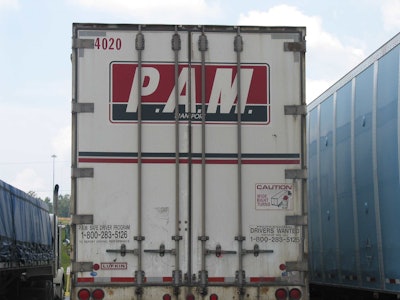
P.A.M. Transportation Services Inc. on Tuesday, July 27, reported net income of $1,261,577 for the quarter ended June 30 and net income of $946,134 for the six-month period then ended. These results compare to a net loss of $2,356,317 and net loss of $5,702,244, respectively, for the three and six months ended June 30, 2009.
Operating revenues, including revenue from fuel surcharges, were $85,237,911 for the second quarter of 2010, a 24.5 percent increase compared to $68,476,476 for the second quarter of 2009. Operating revenues, including fuel surcharges, were $167,084,734 for the six months ended June 30, a 24.4 percent increase compared to $134,294,511 for the six months ended June 30, 2009.
“We were very pleased with our operating results for the quarter, which were not only favorable for obvious financial reasons, but also to reinforce to everyone in our organization that our focused efforts yielded the desired results,” said Daniel H. Cushman, president of Tontitown, Ark.-based P.A.M. “Improvements in several of our key performance indicators contributed to our improved results.”
Cushman said the company is seeing a continued trend toward shipping capacity shortages in the marketplace. “There are several ways to approach a market that has turned favorable to carriers after a long period of being at a dramatic disadvantage due to overcapacity,” he said. “We have chosen an approach of ‘rate corrections’ as opposed to ‘rate increases.’ Our rate corrections are based on supportable facts that we can sit down with our customers and discuss. This information has become available through our continued investment in a yield management team and tools that allow us to determine the right freight at the right price going to the right place.”
Cushman said both the company’s existing customers and new customers are supportive of this approach in a marketplace proliferated with carriers aggressively seeking rate increases based on the maximum amounts that various markets will tolerate. “We see our approach as a sustainable opportunity to gain market share through growth in business with existing customers and gaining business with new customers as others impose aggressive rate increases on the marketplace,” he said.











